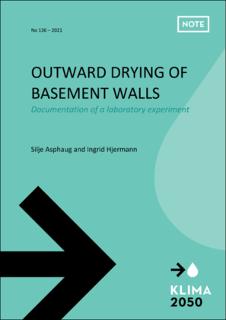| dc.description.abstract | Introduction.
In Norway, recommendations for the construction of basement walls changed in 2015. It is now recommended to use vapour-permeable thermal insulation on the exterior side of basement walls to increase outward drying. The dimpled membrane, traditionally positioned directly on the wall, between the wall and exterior insulation, is now recommended to be positioned on the outer side of the exterior insulation. Although hygrothermal simulations show that the contemporary recommendations result in dryer walls, the effects have not been sufficiently substantiated through measurements.
The main objective of the proposed laboratory experiment was to investigate the applicability of the contemporary recommendations for thermally insulated basement walls in cold climates. More specifically, we investigated the effect of the permeability of the thermal insulation and the position of the dimpled membrane on the outward drying of basement walls. The following research questions were formulated to address this objective:
1. How does the vapour permeability of exterior thermal insulation affect the drying behaviour of concrete walls?
2. How does the placement of the dimpled membrane affect the drying behaviour of concrete walls?
3. Do the results from laboratory measurements substantiate the contemporary Norwegian recommendations for basement walls?
The full details of the laboratory experiment ant its findings are planned to be presented in a scientific journal article titled " Monitoring outward drying of externally insulated basement walls - A laboratory experiment". This note summarizes the products and materials used, measured material properties, placements of the thermocouples, pictures, and specific details regarding the construction of the test setup. In addition, challenges arising during the experiment and sources of error are presented. | |
